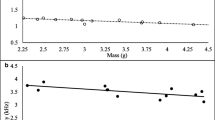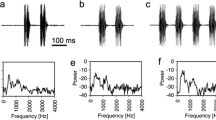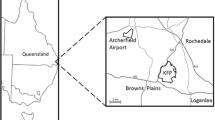Abstract
Habituation and its role in the dear enemy effect was investigated in a population of green frogs, Rana clamitans. Green frogs have a prolonged breeding season, and males defend territories centered around suitable oviposition sites. We tested the prediction that male green frogs will habituate to broadcasts of synthetic conspecific stimuli. Our results indicate that male green frogs can discriminate familiar from unfamiliar stimuli. We suggest that habituation helps to mediate the territorial interactions between male green frogs. Strangers present a greater threat than familiar neighbors. By habituating to the advertisement vocalizations of their near neighbors, males avoid costly interactions with individuals that are not a major threat to their territories.
Similar content being viewed by others
Author information
Authors and Affiliations
Additional information
Received: 20 July 1998 / Accepted after revision: 6 September 1998
Rights and permissions
About this article
Cite this article
Owen, P., Perrill, S. Habituation in the green frog, Rana clamitans . Behav Ecol Sociobiol 44, 209–213 (1998). https://doi.org/10.1007/s002650050533
Issue Date:
DOI: https://doi.org/10.1007/s002650050533




